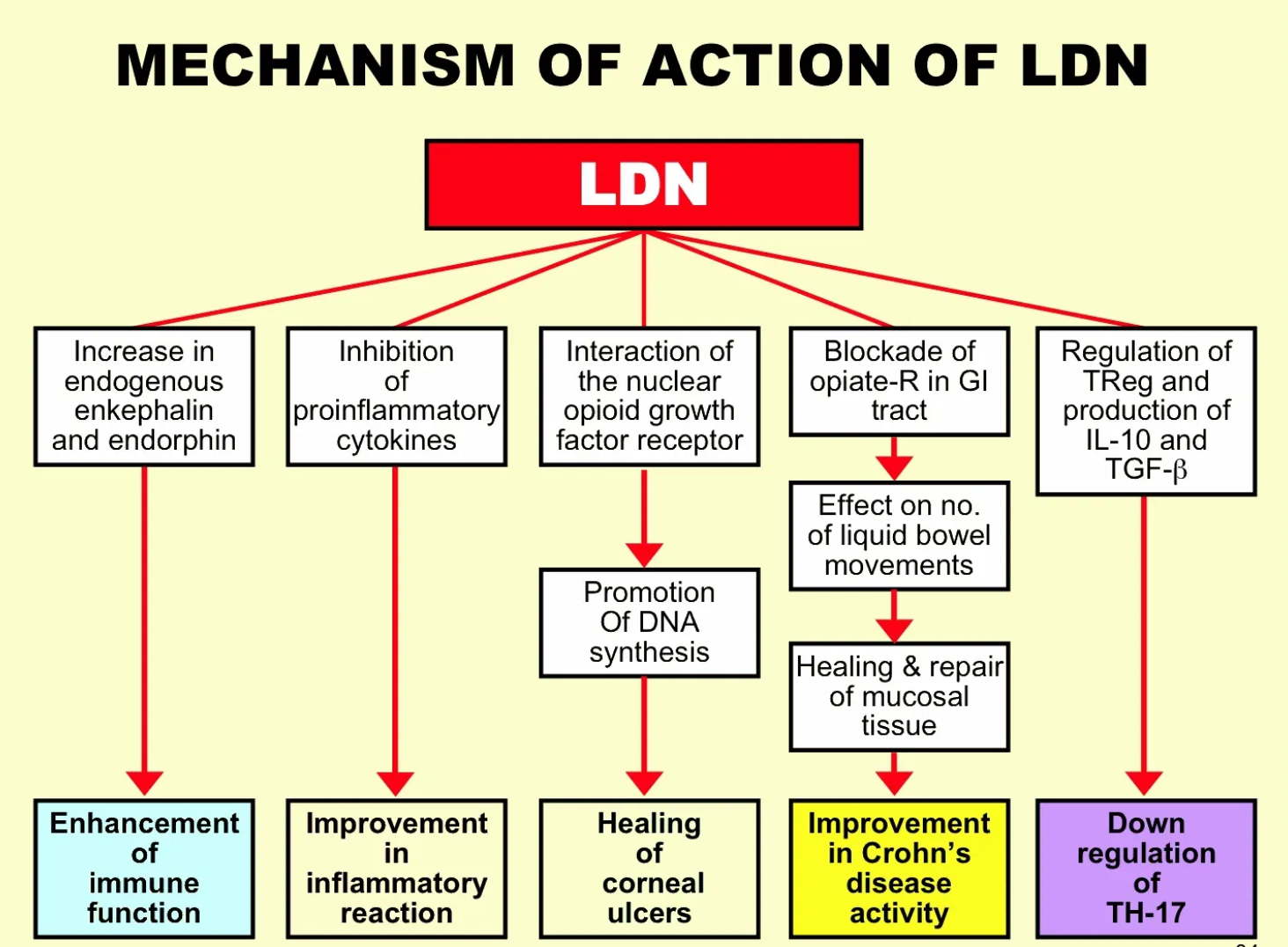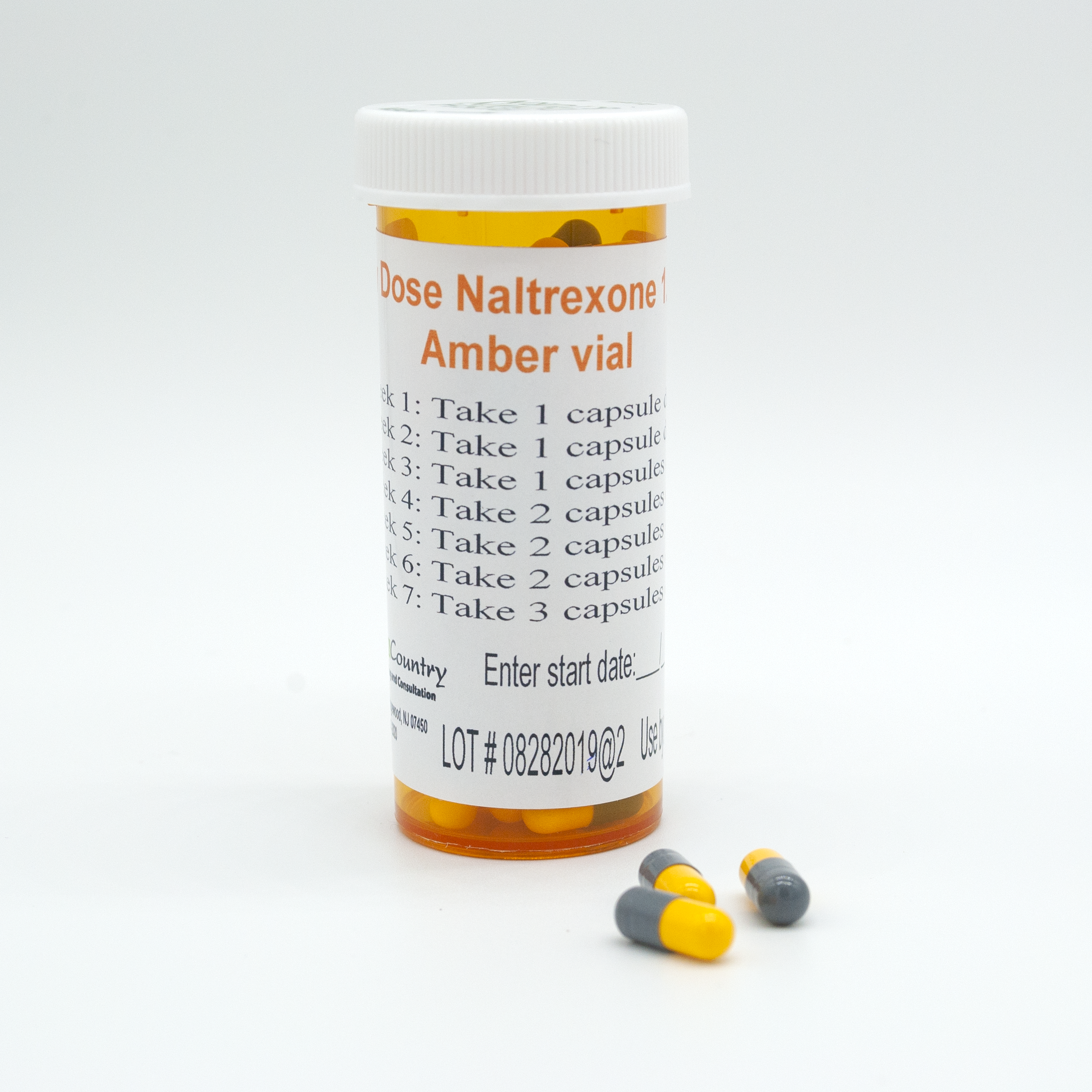Low Dose Naltrexone (LDN) for Autoimmune Conditions
Conditions that may benefit from LDN include: Hashimoto’s thyroiditis, Grave’s disease, Systemic lupus (SLE), rheumatoid arthritis, Crohn’s disease, ulcerative colitis, Multiple sclerosis (MS), fibromyalgia, chronic fatigue syndrome, celiac, psoriasis, Sjogren’s Syndrome, and scleroderma.
What is Naltrexone?
Naltrexone is a drug that is typically used at “full” dose for opioid addiction or overdose. When naltrexone is taken at a much lower dose, patients with autoimmune conditions may experience significant benefits in symptom reduction, improved lab markers, and slowed or reversed disease progression.
How does LDN work?
Low dose Naltrexone temporarily block your opioid receptors. This signals your brain that your levels are low, then your body responds by ramping up your own production of endorphins. This surge of endorphins (and opiate receptors) can modulate your immune system and decrease autoimmune symptoms.
When do you take LDN?
Taken at 9pm, LDN will partially and temporarily block your opioid receptors when your endorphin levels are typically highest (around 3AM to 4AM).
Typical LDN Dose Titration:
Week 1: 0.5mg ,taken at 9pm.
Week 2: 1.0 mg.
Week 3: 1.5 mg.
Week 4: 2.0 mg.
Week 5: 2.5 mg.
Week 6*: 3.0 mg.
I usually have patients hold at the 3.0mg dose to assess response. If no or low response is noted, we may elect to increase your dose by 0.5mg per week (if indicated) up to ~4.5mg per day.
Where to get LDN?
LDN is not yet approved by the FDA for autoimmune diseases, but it is available at many compounding pharmacies, with a prescription. It is best to work with a pharmacy that is familiar with making LDN to ensure that they are not compounding a “slow release” formula. Additionally, we do not want calcium carbonate (a common filler) because this can slow the absorption of the naltrexone—and significantly blunt the intended effects.
Side Effects:
Side effects of LDN are quite rare. Occasionally, patient report vivid dreams and/or difficulty sleeping. Some patients with MS have reported muscle spasms, but again, very rarely and usually with higher LDN doses (~4.5 mg). If there are adverse effects, patients can lower their dosage to 3.0mg. Notably, LDN can interfere with any opioid medications taken for pain management. You can still use these prescribed medications, but they would need to be taken hours away from LDN.
Next Steps:
To see if LDN is appropriate in your case, please check out the services section, return the intake paperwork, and then contact Dr. Morris to schedule your initial consultation.



